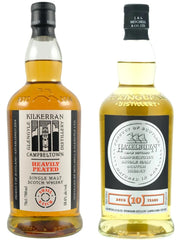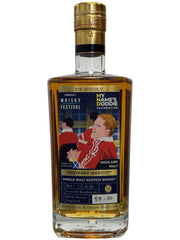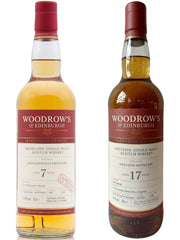For those of you who don’t know, caramel colouring, also known as spirit caramel or E150a, is a food additive. More specifically it’s a food colouring. It’s used in everything from chocolate to cough drops, but most importantly it’s used by some distilleries in certain bottlings of whisky.
Why whisky?
Well E150a is equivalent of airbrushing in the whisky world. Want your latest batch of Lagavulin 8 to look exactly like the last? No problem! Chuck in some E150a. Need your Non age statement (NAS) whisky to look like it was in a sherry cask and not just stored in a warehouse that had a sherry cask in it twenty years ago. You guessed it E150a.
'E150a is equivalent of airbrushing in the whisky world'
So why are people unhappy?
Well unsurprisingly, whisky drinkers who have been taught that colour equates to age and quality are unhappy that they can’t trust their eyes. However, It’s not just the colour that’s the issue. Some people claim to be able to taste the E150a in their whisky.
Does E150a have a taste?
Yes, the name suggests sweetness but in reality caramel colouring is actually very bitter.
But should we really care?
Well that’s what we wanted to find out. So we got samples of Kilchoman Machir Bay and tainted half of them with E150a. We then supplied the samples to some friends. We asked that they gave us some notes on how they tasted, what they thought the cask types were, age of the drams etc, and most importantly which was their favourite.
So what happened?

Well as you might have guessed when asked to choose a favourite based purely on looks the colouring won out near unanimously.
Ok, but what about the smell?
Sample 1 - Kilchoman Machir Bay Cask Strength (untainted)
Light peat, rubber, sweet oak, mustiness reminiscent of a dunnage warehouse, buttered popcorn, salty crackers, fresh tarmac, toffee, and orange pith.
Sample 2 - Kilchoman Machir Bay Cask Strength (tainted with E150a)
Light peat, leather, old book, dry woodiness, burnt toffee, lightly toasted bread, freshly squeezed orange juice, cedar wood, a touch of aniseed, and warm spices.
So which did people prefer on the nose?
The participants didn't particularly prefer one to the other, they were both quite similar.
And finally the all important taste test...
Sample 1 - Kilchoman Machir Bay Cask Strength (untainted)
Black pepper, sea water, alcohol tingles on the tongue, Light peat, oil, earthy bitterness, dried mushrooms, drying toasted wood finish that lasts quite a while, citrus fruit, grilled melon, twiglets.
Sample 2 - Kilchoman Machir Bay Cask Strength (tainted with E150a)
Black pepper, very dry, almost too bitter to enjoy. It’s like there was charred wood chips left inside the cask. Grapefruit bitterness, overly bitter. Not great. Super peppery and bitter, baby vomit, bitter citrus fruits, quite unpleasant. Wouldn’t recommend at all.
Conclusion
If you’ve read the tasting notes you’ll have deduced the E150a ruined the taste of the Kilchoman. Now it should be mentioned that Kilchoman Machir Bay is a combination of bourbon and sherry casks, but it’s very weighted towards Bourbon and as such is a very light whisky. It’s also worth knowing we added about four drops of E150a to a 25ml pour to turn the whisky into a fake sherry bomb. This we suspect is more than you’d find most distilleries using as a ratio. However, it’s clear that the E150a does have an impact on the taste of whisky. Now whether the quantities that are being added to a bottle are sufficient for any of us to tell is a separate question, but given the results of the taste test we’re very much inclined to err on the side of caution and avoid any distilleries that use E150a. Besides, even if you can’t taste the E150a isn’t it dishonest to colour the whisky to make it look more appealing?
Have you been able to taste caramel colouring in your whisky? Let us know what you think in the comments below.



1. Daniel, thanks for taking the time to reply.
2. Andrew, I think Daniel’s answer stands for itself and does not need my response. I certainly did not take it as a challenge.
For the record, I’m certainly not a fan of added colouring and think it should be openly stated whenever it is used and not left to the purchaser’s guesswork. I’m also pretty sure there are a lot of whisky snobs out there who claim they can taste the colouring when in reality they cannot. I think other bloggers out there have done similar blind taste tests with inconclusive results on whether caramel can be tasted or not. My main issue was with the methodology and interpretation of results. Caramel in whisky is used at 0.1-0.5%. Four drops (0.2ml) of caramel in 25ml = 0.8%, i.e. up to 8x usual concentration. No wonder you could taste it. As a control, you should have added 4 drops of water to the untainted drams, as the caramel would also have affected the taste by a dilution effect. Also, we’re not told how many “some friends” is, so we don’t know the actual range of answers received and whether the results were overwhelmingly in one direction or another. It does not change the bottom line of the article that added colour should be declared – with which I wholeheartedly agree. Slainte!
I see Richard doesn’t have a reply to that lol.
Richard, I can see how you would equate the word tainted as bias, but that wasn’t our intention here. It’s true that we can’t really see a reason for using colouring as we don’t equate quality to colour, but for me as one of the people who tried the samples, it was quite eye opening to see the difference in taste.
As mentioned in the post, we most likely did add far more than a distillery would add. Maybe with a tiny touch we’d not be able to detect it, but then it wouldn’t really change the colour too much either i’d expect.
We didn’t mean this to be a scientific experiment with all variables controlled and a full report written afterwards, so I understand your comments. I was given the samples and told to try them side by side and write some notes. I wasn’t given any other information than that. After tasting them, I did feel that they may be sister casks or something, maybe one had additional maturation in a very active quarter cask or something of the sort.
At the end of the day, this is a blog with our opinions on whisky. My opinion is that I don’t believe colour matters at all, and that’s why we don’t mention the colour of whiskies in our reviews (even when we’re sure it’s natural colour), we rely on the smell and the taste to judge. I feel that whisky marketing relying on darker colours to sell their whisky, or trying to have every batch of whisky in a release the exact same shade is unfair to the consumer. Maybe I am biased, but we all are to some extent.
Your bias is apparent in your choice of words (tainted vs untainted); the amount of caramel used is likely excessive; how many samples did you give out for testing; what was the actual range of opinions expressed; how did you describe the purpose of the test to your friends? All of these can set up unconscious bias that confirms the answer you are looking for.
I am against E150a but not massively I cannot taste it – I think you added much more than is used. I am much more against chill filtration which ruins mouthfeel and aroma and flavour delivery! Ie it doesn’t change flavour. It flavour is more readily detected.
Leave a comment